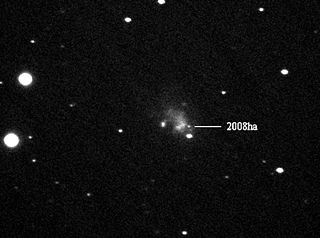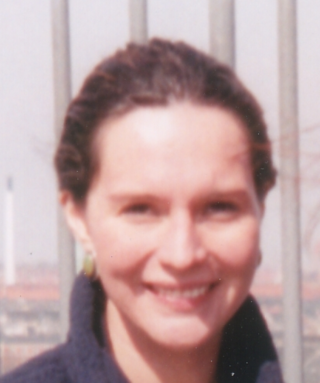
A supernova is a powerful and luminous explosion of a star. A supernova occurs during the last evolutionary stages of a massive star or when a white dwarf is triggered into runaway nuclear fusion. The original object, called the progenitor, either collapses to a neutron star or black hole, or is completely destroyed to form a diffuse nebula. The peak optical luminosity of a supernova can be comparable to that of an entire galaxy before fading over several weeks or months.

Betelgeuse is a red supergiant star of spectral type M1-2 and one of the largest visible to the naked eye. It is usually the tenth-brightest star in the night sky and, after Rigel, the second-brightest in the constellation of Orion. It is a distinctly reddish, semiregular variable star whose apparent magnitude, varying between +0.0 and +1.6, has the widest range displayed by any first-magnitude star. At near-infrared wavelengths, Betelgeuse is the brightest star in the night sky. Its Bayer designation is α Orionis, Latinised to Alpha Orionis and abbreviated Alpha Ori or α Ori.

A blue supergiant (BSG) is a hot, luminous star, often referred to as an OB supergiant. They have luminosity class I and spectral class B9 or earlier.

A Type Ia supernova is a type of supernova that occurs in binary systems in which one of the stars is a white dwarf. The other star can be anything from a giant star to an even smaller white dwarf.

Nancy Grace Roman was an American astronomer who made important contributions to stellar classification and motions. The first female executive at NASA, Roman served as NASA's first Chief of Astronomy throughout the 1960s and 1970s, establishing her as one of the "visionary founders of the US civilian space program".

Alexei Vladimir "Alex" Filippenko is an American astrophysicist and professor of astronomy at the University of California, Berkeley. Filippenko graduated from Dos Pueblos High School in Goleta, California. He received a Bachelor of Arts in physics from the University of California, Santa Barbara in 1979 and a Ph.D. in astronomy from the California Institute of Technology in 1984, where he was a Hertz Foundation Fellow. He was a postdoctoral Miller Fellow at Berkeley from 1984 to 1986 and was appointed to Berkeley's faculty in 1986. In 1996 and 2005, he a Miller Research Professor, and he is currently a Senior Miller Fellow. His research focuses on supernovae and active galaxies at optical, ultraviolet, and near-infrared wavelengths, as well as on black holes, gamma-ray bursts, and the expansion of the Universe.
St. Stephen's Episcopal School is a private coeducational preparatory boarding and day school in Austin, Texas. Enrollment for the 2019-20 academic year is approximately 694, with 487 students in grades 9–12 and 207 in grades 6–8. Of the school's 694 students, 523 are day students and 171 are boarding students. The school's campus overlooks Lake Austin and is spread across 370 acres (1.5 km2) of the Texas Hill Country. The school is accredited by The Association of Boarding Schools, Independent Schools Association of the Southwest, the Southwestern Association of Independent Schools, the National Association of Episcopal Schools, the National Association of Independent Schools, National Association for College Admission Counseling, and the Association of College Counselors in Independent Schools.

Adam Guy Riess is an American astrophysicist and Bloomberg Distinguished Professor at Johns Hopkins University and the Space Telescope Science Institute. He is known for his research in using supernovae as cosmological probes. Riess shared both the 2006 Shaw Prize in Astronomy and the 2011 Nobel Prize in Physics with Saul Perlmutter and Brian P. Schmidt for providing evidence that the expansion of the universe is accelerating.

SN 2008ha was a type Ia supernova which was first observed around November 7, 2008 in the galaxy UGC 12682, which lies in the constellation Pegasus at a distance of about 21.3 megaparsecs (69 Mly) from Earth.

Pilar Ruiz-Lapuente is an astrophysicist working as a professor at the University of Barcelona. Her work has included research on type Ia supernovae. In 2004, she led the team that searched for the companion star to the white dwarf that became supernova SN 1572, observed by Tycho Brahe, among others. Ruiz-Lapuente's research on supernovae contributed to the discovery of the accelerating expansion of the universe.

Alicia Margarita Soderberg is an American astrophysicist whose research focused on supernovae. She was an assistant professor of astronomy at Harvard University and a postdoctoral fellow at the Harvard-Smithsonian Center for Astrophysics.

Vassiliki Kalogera is a Greek astrophysicist. She is a professor at Northwestern University and the director of the Center for Interdisciplinary Exploration and Research in Astrophysics (CIERA). She is a leading member of the LIGO Collaboration that observed gravitational waves in 2015.
Nia Imara is an American astrophysicist, artist, and activist. Imara's scientific work deals with galactic mass, star formation, and exoplanet detection. Imara was the first African-American woman to earn a PhD in astrophysics at the University of California, Berkeley and was the inaugural postdoctoral fellow in the Future Faculty Leaders program at Harvard University. In 2020, Imara joined the University of California, Santa Cruz as an assistant professor in the Department of Astronomy.
Jennifer Hoffman is an American astrophysicist and associate professor at the University of Denver. She studies the circumstellar material around stars.
JJ Eldridge is a theoretical astrophysicist based in New Zealand. Eldridge is the head of the Department of Physics at the University of Auckland and co-author of The Structure And Evolution Of Stars.

Angela Karen Speck is a Professor of Astrophysics and the Chair of the Department of Physics & Astronomy at the University of Texas at San Antonio. She works on infrared astronomy and the study of space dust. She is a popular science communicator, and was co-chair of the National Total Solar Eclipse Task Force.
Annette S. Lee is an American astrophysicist and professional artist. Lee is the director of Native Skywatchers, a program created to record, map, and share Indigenous star knowledge. She is mixed-race Lakota and works with Ojibwe, Dakota and Lakota communities to preserve those cultures' astronomical and ecological knowledge.
John Craig Wheeler is an American astronomer. He is the Samuel T. and Fern Yanagisawa Regents Professor of Astronomy Emeritus at the University of Texas at Austin. He is known for his theoretical work on supernovae. He is a past president of the American Astronomical Society, a Fellow of that society, and a Fellow of the American Physical Society.
Ken'ichi Nomoto is a Japanese astrophysicist and astronomer, known for his research on stellar evolution, supernovae, and the origin of heavy elements.












